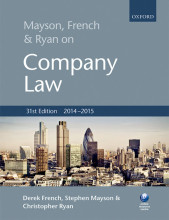EU COMPETITION LAW - Article 102: Abuse of A Dominant Position - Element 2: Dominance
7 important questions on EU COMPETITION LAW - Article 102: Abuse of A Dominant Position - Element 2: Dominance
United Brands Co v Commission (case 27/76)
AKZO Chemie BV [1986] 3 CMLR 273, para 67
Europemballage Corp and Continental Can Co Inc v Commission (case 6/72)
Thus, to access if an undertaking has sufficient economic strength to behave independently of, or even exclude, competitors, it is necessary to ascertain the relevant market in which competition is said to exist.
- Higher grades + faster learning
- Never study anything twice
- 100% sure, 100% understanding
Instituto Chemioterapico Italiano SpA v Commission (cases 6 and 7/73)
Notice on the Definition of the Relevant Market [1997] OJ C372
- This Notice is NOT LEGALLY BINDING (soft law) but EU courts have referred to it in the case law.
- This Notice does NOT OVERRULE existing CJEU case law.
- It may be not possible to be applied because the lack of data, new products or market.
- There is this "cellophane fallacy" in the Notice:
- The Notice assumes that the market is competitive
- If market already monopolised, test would give wrong result (i.e. if in a monopoly, a price increase would lead to a switch to inferior substitutes and RPM would be WIDER; high degree of substitutability).
Does the undertaking have substantial market power?
No, not in DP.
What are the issues that needed to be consider in determining factual dominance?
Constraints imposed by the existing supplies from, and the position on the market of, actual competitors
- Market share
- The length of time during which a firm has held its position in the RPM
- Fragmented markets
Constrains imposed by the credible threat of future expansion of actual competitors or entry by potential competitors (expansion or entry)
- Legal barriers
- Barriers to entry/expansion
- Financial and technological resources
- Degree of vertical integration
- Behaviour/Conduct
- Barriers to entry
Constraints imposed by the bargaining strength of the undertaking's customers (countervailing buyer power).
The question on the page originate from the summary of the following study material:
- A unique study and practice tool
- Never study anything twice again
- Get the grades you hope for
- 100% sure, 100% understanding































